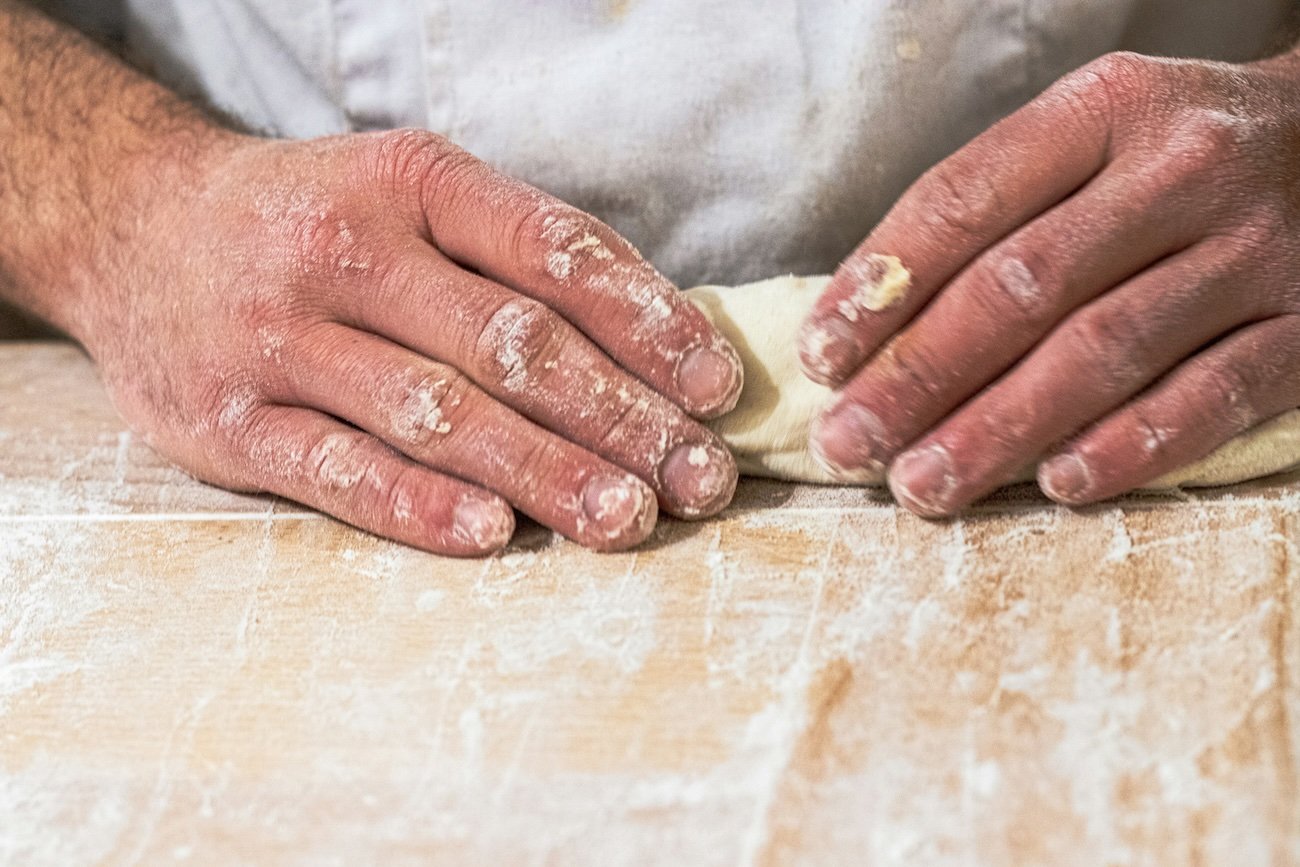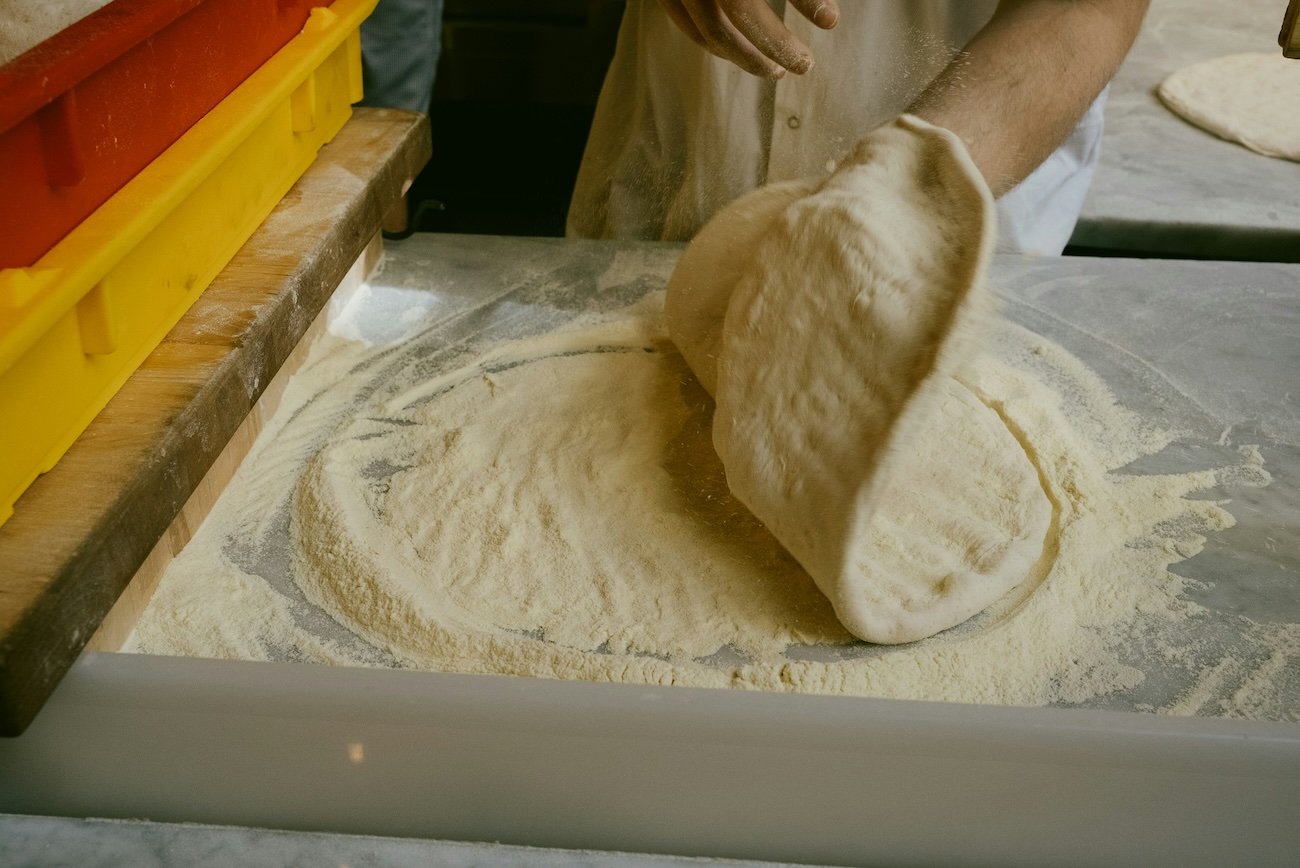Understanding Sticky Dough: The Science Behind the Problem
Sticky dough is one of the most common challenges that pizza makers face, especially when working with high-hydration recipes. While some stickiness is actually desirable and indicates proper gluten development, excessive stickiness can make shaping nearly impossible and lead to frustration in the kitchen. Understanding the science behind sticky dough is the first step toward mastering it.
Dough stickiness is primarily determined by the balance between water content, flour protein levels, gluten development, and environmental factors. When this balance is disrupted, the dough becomes unmanageable. The good news is that with the right knowledge and techniques, you can transform even the stickiest dough into a workable, beautiful pizza base.
Root Causes: Why Dough Gets Too Sticky
- Excessive Hydration: The most common cause of sticky dough is too much water relative to flour. While high hydration (70%+) can create excellent texture and flavor, it requires proper technique to handle. Each flour type has a maximum water absorption capacity, and exceeding this creates a sticky mess.
- Insufficient Gluten Development: Gluten is the protein network that gives dough structure and strength. When gluten isn't properly developed through adequate kneading or folding, the dough lacks the framework to hold water properly, resulting in a sticky, shapeless mass.
- Environmental Factors: High humidity in your kitchen can cause flour to absorb moisture from the air, effectively increasing your dough's hydration. Similarly, warm temperatures can accelerate fermentation, making the dough more difficult to handle as it becomes more extensible.
- Flour Selection Issues: Low-protein flours (like cake flour) can't absorb as much water as high-protein bread flours. Using the wrong flour for your hydration level is a recipe for sticky dough.
- Over-Fermentation: When dough ferments too long or at too high a temperature, the gluten structure begins to break down, making the dough sticky and difficult to shape. This is especially common with sourdough or long-fermented doughs.
Prevention: Building Better Dough from the Start
The best approach to sticky dough is prevention. By understanding your ingredients and environment, you can create dough that's both flavorful and manageable:
- Choose the Right Flour: For high-hydration doughs (70%+), use bread flour with 12-14% protein content. For moderate hydration (60-70%), all-purpose flour works well. The protein content determines how much water your flour can absorb.
- Measure Precisely: Use a digital scale and measure ingredients by weight, not volume. Even small variations in flour or water can dramatically affect dough consistency.
- Control Temperature: Keep your dough at 75-78°F (24-26°C) during mixing and initial fermentation. This temperature range allows for proper gluten development without excessive stickiness.
- Start Conservative: When trying a new recipe, start with the lower end of the hydration range and gradually increase as you become comfortable with the dough handling.
Immediate Solutions: Techniques for Handling Sticky Dough
1. The Wet Hands Technique
Instead of flouring your hands, wet them with water. This creates a barrier between your skin and the dough, preventing sticking while maintaining the dough's hydration. Re-wet your hands as needed during shaping.
2. Strategic Flour Dusting
Use a light dusting of flour on your work surface and hands, but be judicious. Too much flour can make the dough dry and tough. Use a fine-mesh sieve to apply flour evenly and sparingly.
3. The Bench Scraper Method
A bench scraper is your best friend for sticky dough. Use it to lift, fold, and shape the dough without it sticking to your hands. The scraper can also help you gather dough that has spread out on your work surface.
4. The Slap and Fold Technique
For very sticky doughs, the slap and fold technique is highly effective. Pick up the dough and slap it down onto the work surface, then fold it over itself. This action develops gluten while incorporating air, making the dough more manageable.
5. The Stretch and Fold Method
During bulk fermentation, perform stretch and fold sessions every 30 minutes for the first 2-3 hours. This gentle technique develops gluten without overworking the dough and helps manage stickiness.
Advanced Techniques: Mastering High-Hydration Dough
Once you're comfortable with basic sticky dough handling, you can explore advanced techniques that allow you to work with very high hydration levels:
- Autolyse: Mix flour and water only, let rest for 20-30 minutes, then add salt and yeast. This allows flour to fully hydrate and gluten to begin developing naturally.
- Coil Folds: Instead of traditional stretch and folds, use coil folds where you lift the dough from the center and let it fold under itself. This is gentler and more effective for very wet doughs.
- Cold Fermentation: Refrigerate your dough after initial mixing and let it ferment slowly. Cold dough is less sticky and easier to handle, while still developing excellent flavor.
Troubleshooting: When Things Go Wrong
Even with the best techniques, you might encounter situations where your dough is too sticky to handle:
- If dough is too sticky to shape: Let it rest for 10-15 minutes, then try again. The gluten will relax and become more manageable.
- If dough tears during stretching: The gluten is underdeveloped. Give it more time to ferment or perform additional stretch and fold sessions.
- If dough won't hold its shape: It may be over-fermented. Try using it immediately or refrigerate to slow down fermentation.
The Path to Mastery
Handling sticky dough is a skill that develops with practice. Start with moderate hydration levels and gradually increase as you become more comfortable with the techniques. Remember that some stickiness is normal and even desirable—it indicates proper gluten development and high hydration, both of which contribute to excellent pizza texture and flavor.
The key is to embrace the stickiness rather than fight it. With the right techniques and a bit of patience, you'll find that sticky dough can produce some of the most delicious, light, and airy pizzas you've ever made.



